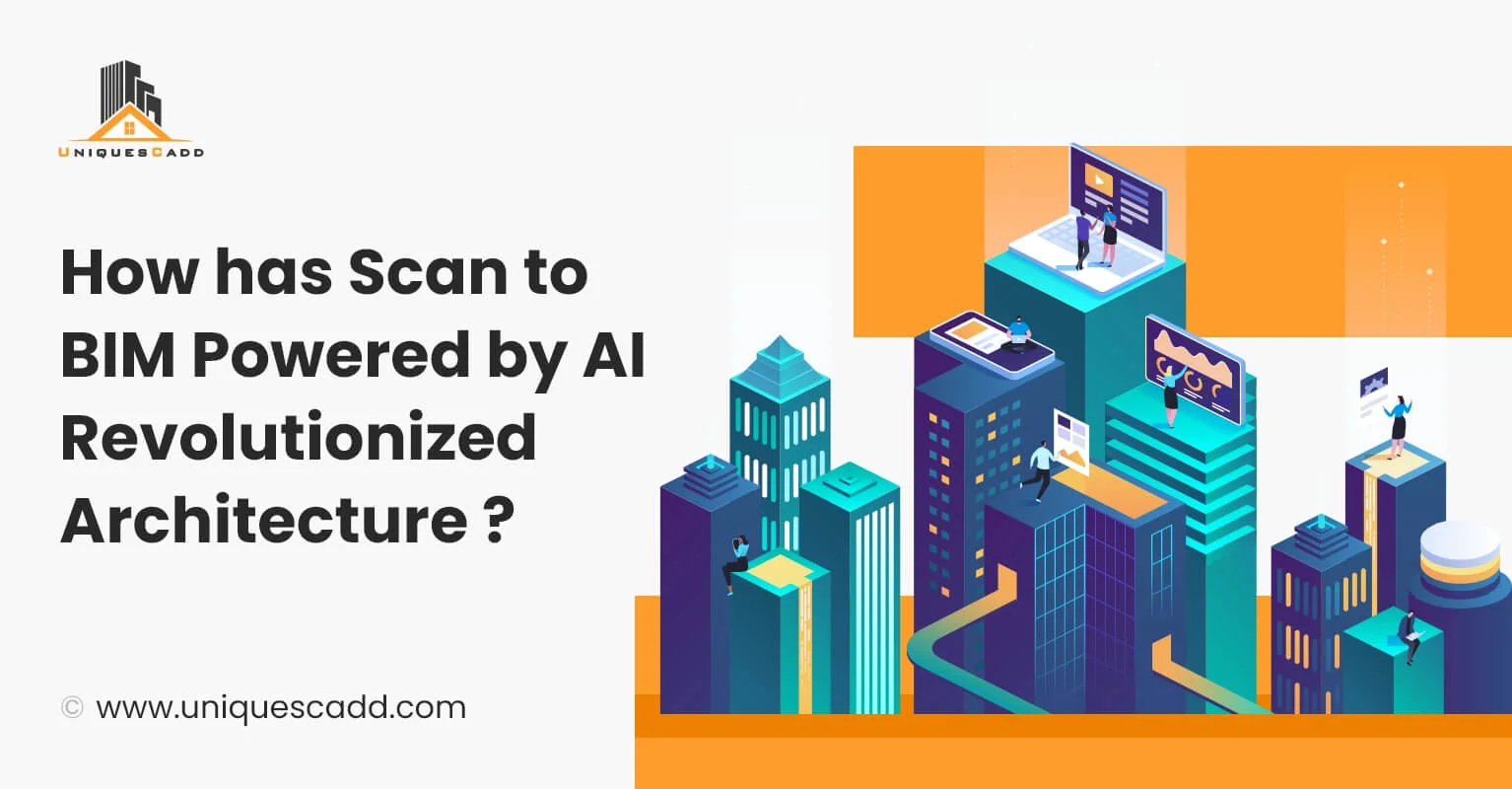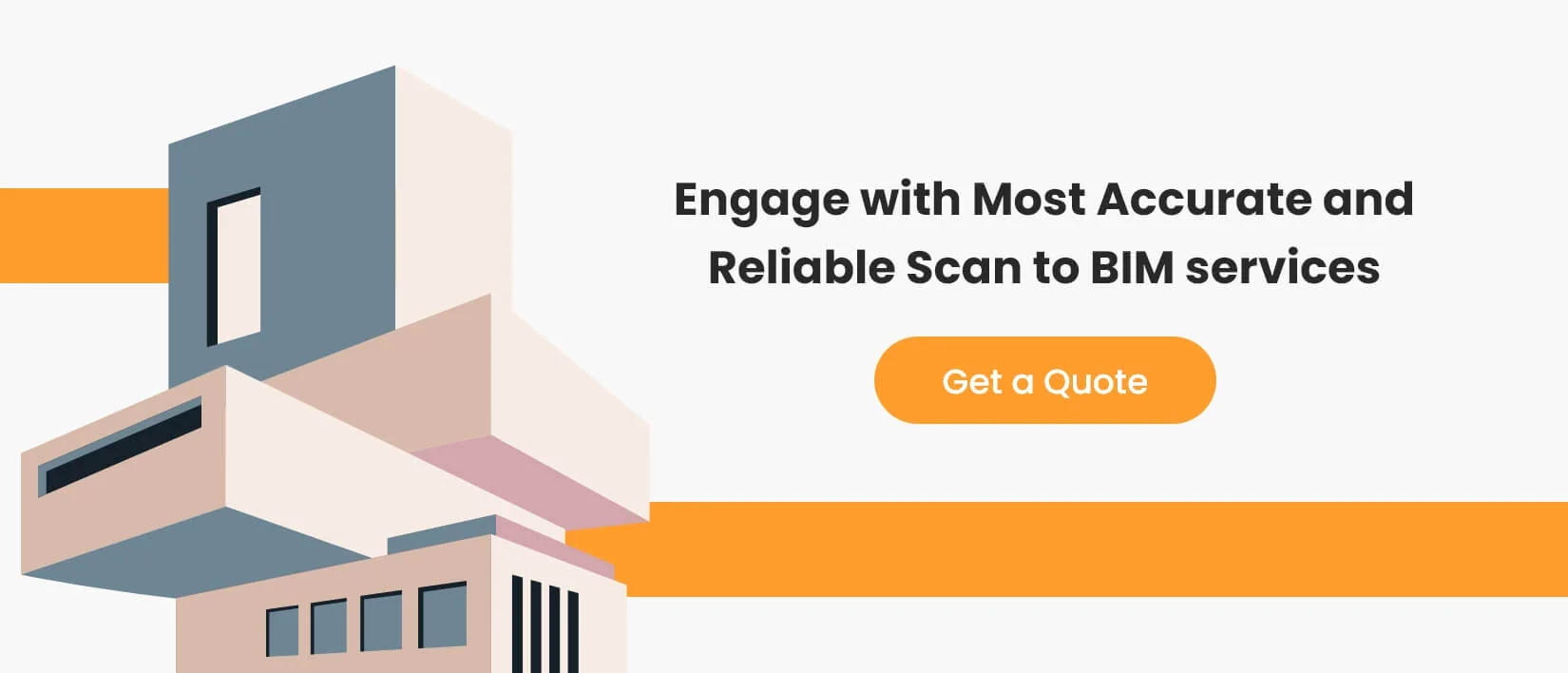
How has Scan to BIM Powered by AI Revolutionized Architecture?
According to sources, 31% of businesses intend to adopt artificial intelligence in some capacity during the following year. In architecture, AI can significantly improve the problem-solving skills of CAD software. With AI integration and the lag of 2D or 3D CAD software, the decision-making process might be considerably faster than you think. AI has the potential to make architecture more simple, efficient, and safe. Here are seven ways AI is transforming the architectural field. Some designers are concerned about AI replacing human employees, which is understandable but needs to be more accurate.
Artificial intelligence has the potential to make architecture more simple, efficient, and safe. Here are seven ways AI is transforming the architectural field. Building Information Modeling can significantly reduce the time it takes to plan and develop a construction using AI. Augmented reality has taken over the video game business and is now making inroads into construction and design. Historically, the building business has been one of the least technologically advanced. However, there is significant potential for integrating AI into construction, which might lower building costs by up to 20%. Firms can replicate everything from aesthetics to noises, and input may be promptly incorporated into the design. Computers can perform a job analysis.
How AI helps in Scan to BIM Services
Building information modeling is a technique that assists in creating multi-dimensional models of infrastructure projects in a virtual simulation before their execution on the ground. It has evolved into a synergistic system that delivers 3-D models of buildings to architects and stakeholders while also assisting them in assessing and analyzing the impact of a minor adjustment on the overall project. Scan to BIM services is frequently heard in the BIM business these days. There is little doubt that Scan to BIM has made its way through and is now one of the most requested and used technologies among AEC members. Point cloud to BIM has significantly changed the AEC sector by accelerating the digital modeling process and providing As-built BIM models for cost-effective refit, refurbishment, expansion, and renovation projects, reducing project risks. The typical workflow for Scan-to-BIM involves scanning the edifice, taking the registered point cloud data, and turning them (modeling) into deliverable – BIM models, incorporating required standards. All these activities are time-consuming and require human intervention. Hence, Artificial intelligence is vital in BIM since it helps identify potential difficulties in the future. Machine Learning is an AI technology that allows the system to learn from itself and execute based on these new discoveries. Because infrastructure development projects are vast, and mistakes can cost a corporation a lot, AI can assist in bringing in a long-term perspective.
How AI works in Point Cloud to BIM Service?
Applying artificial intelligence in BIM service helps lessen the risks associated with human mistakes. Because infrastructure projects are risky in and of themselves, it helps to avoid significant damage to life and property. The incorporation of AI in BIM has only recently begun, and the combination of these two formidable technologies is likely to develop in the future. It has aided in developing productivity in construction projects and the cohesion and integration of labor across teams on an infrastructure project. A machine learning model handles these features by encrypting each element’s attributes, such as surface area, volume, orientation, etc. To elaborate, AI enables users to enter design standards and codes as rules, allowing the machine learning engine to generate a viable deliverable. This can make BIM-compliant documents more accessible and interpretable. In terms of Scan to BIM, these technologies can be used to develop floor plan designs, topography, and other jobs that would otherwise be repetitious and time-consuming. Many BIM software companies have begun to use Artificial intelligence and machine learning to increase the efficiency and potential of their software. ScanX, deep fusion, Aurivus, Avvir, and BIMERR are examples.
What are the benefits of Scan-to-BIM powered by AI/ML?
Risk mitigation is critical in an accident-prone business like construction. Artificial intelligence finds high-risk zones and notifies individuals. This aids in developing contingency plans and evacuation tactics and identifying future threats such as heights and falling hazards. When fed a set of “rules,” it can generate accurate models and floor plans. Integrating these plans and all systems via Artificial Intelligence allows essential modifications across the spectrum to be made without the burden of disseminating information. For example, if the architect decides to reduce the height of the building by 1 centimeter, the entire design, including machinery, resources, and teams, will be streamlined correspondingly. Robotics, deep learning, mobile scanning, drones, and AR/VR are anticipated to influence the future of construction by combining with and improving Scan to BIM operations. Instead of eliminating or replacing the human worker, these technologies assist people in performing their responsibilities more efficiently. These technologies take over laborious and time-consuming tasks, allowing the workers to focus on the tasks that require their full attention.
Rework and the costs associated with it can be avoided. The ability to update and enhance, hence assisting in consistently delivering efficient, tailored, and practical solutions. Predictive analytics aids in the identification and elimination of hazards.
Conclusion
The combination of Scan to BIM services and AI/ML is notable, and it is expected to see a wide range of industrial applications in the coming days. Overall, this improves project productivity, saves time and money, and reduces risks and accidents in infrastructure development. True success comes from forging ahead and embracing these technologies to achieve fruitful results.
- Digitization for Decarbonization – Data to the Rescue - February 2, 2024
- Top 10 Features in Revit 2023 to Look at - February 1, 2024
- Significance of Architectural 3D Visualization Services in the AEC Industry - January 23, 2024





